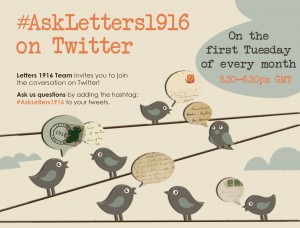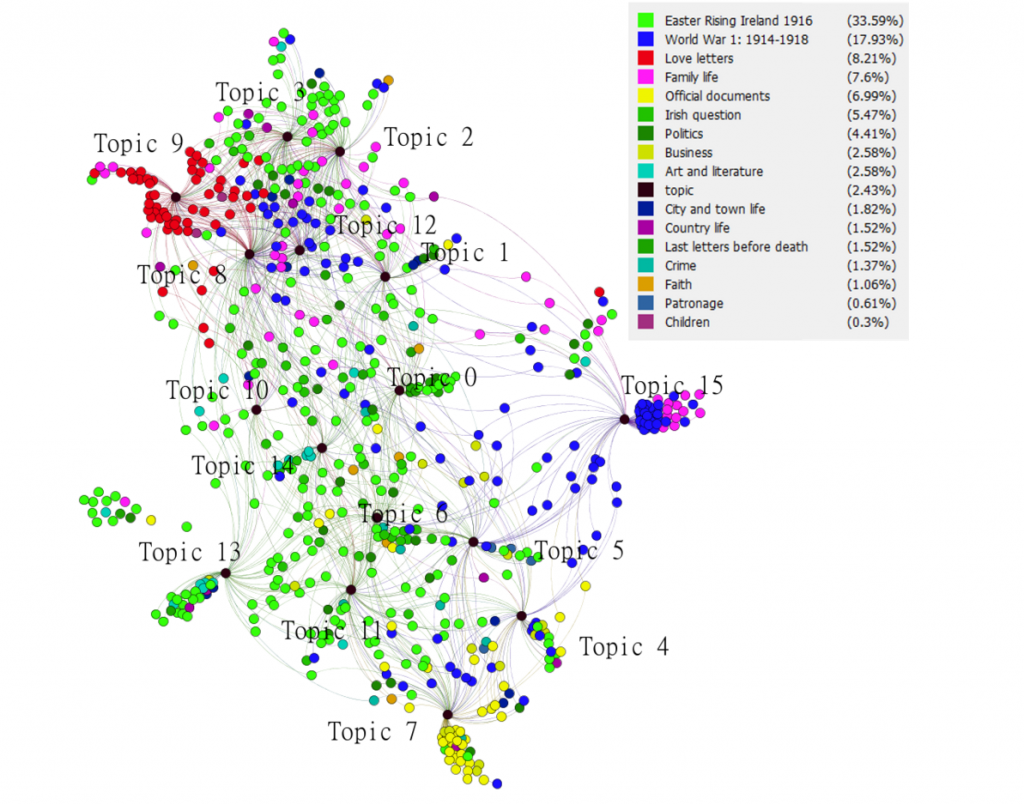
The last #AskLetters1916 Twitter chat took place on Tuesday 4 November from 5.30 – 6.30pm (GMT). The topic for the chat was:
TEXT ANALYSIS
Click here to catch up on the #AskLetters1916 Twitter chat about Text Analysis.
Storing information; displaying it on a screen; now even transporting it to screens half way across the world: these are things computers and computer networks are good at. Understanding what the information actually says has always needed humans to read it and make sense of it. Making a computer understand human language is one of the fundamental goals of artificial intelligence (Alan Turing’s eponymous ‘test’ for an ‘intelligent machine’ involves a computer being able to understand and reply to questions in a way that fooled people into believing it was human).
As computers have become more powerful, the fields of text analysis and natural language processing have become increasingly sophisticated. Researchers are able to mine Tweets not just for trending topics (#LettersOf1916 is being mentioned a lot) but perform ‘sentiment analysis’ (“I really love #LettersOf1916” and “Not that #LettersOf1916 again!” obviously carry quite different messages!).
The Letters of 1916 project itself contains a wealth of data. Looking through all the letters ‘manually’, we might find some particularly fascinating information. But using a range of text analysis approaches, it becomes possible to ask questions with a much wider scope: Are there trends in what people are writing about? What do people feel about the events of 1916? Are some subjects more important to men or women, or to the middle classes?
Roman Bleier has already done some work using data from the project, using the manually-assigned categories from the transcription desk and automatically analysing the content of the letters to find identify important clusters of topics. Richard Hadden has also been using the project data to try and draw a ‘social network’ of letter-writers.
Do you use #TextAnalysis tools or methods in your research? Do you have any tips or insights that you could share? The Letters of 1916 team will be online from 5.30pm on Tuesday 4 November and we would love to hear from you!
Tweet the team!
The people behind Letters of 1916 are on Twitter:
Professor Susan Schreibman | Twitter: @schreib100
Karolina Badzmierowska | Twitter: @karolinabadz
Emma Clarke | Twitter: @clarke__emma
Richard Hadden | Twitter: @oculardexterity
Shane McGarry | Twitter: @irishgeek79
